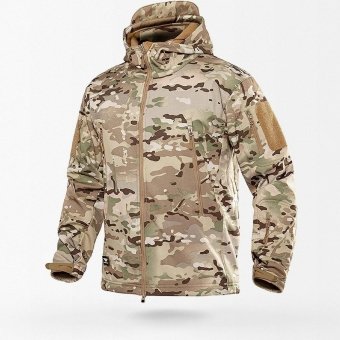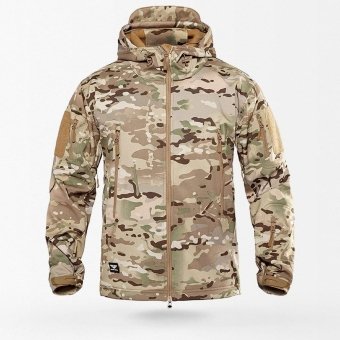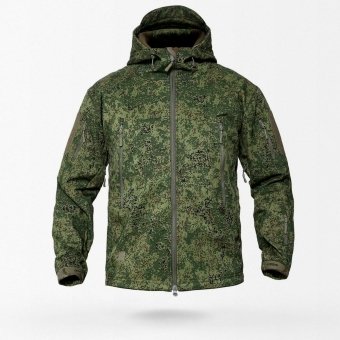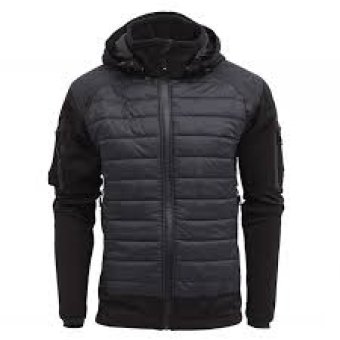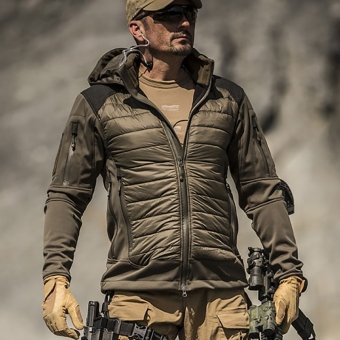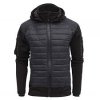Military jackets are known for their durability, functionality, and rugged design, but even the toughest gear needs proper care to maintain its quality. No matter what kind of jacket it is—whether tactical, camo-inspired, bomber, fleece, or waterproof—they all require different techniques for washing and maintenance to keep them performing at their best in every condition.
In this article, we will discuss further how you should wash your military jacket and what the care instructions will help you keep your jacket new without losing its features. As General George S. Patton said,
“A pint of sweat will save a gallon of blood.”
Taking good care of your tactical jacket means you are ready for everything without compromising your gear quality.
Washing a Tactical Jacket: The Basics

Tactical jackets are constructed with durable fabrics to withstand harsh conditions, but they should always be treated with care. These jackets are usually made with water-resistant, breathable, and durable fabrics which is why it is important to wash them properly to preserve their unique qualities.
Key steps to washing a tactical jacket:
- Check the Label: Before laundering, check what’s on the label. Tactical jackets, like most other types of clothing, come with certain specifications that must be adhered to preserve the life of the jacket through proper cleaning.
- Hand Wash vs. Machine Wash: Most tactical gear should be hand washed when necessary before being placed in a washing machine to prevent damage from harsh washer agitation. If machine washing is necessary, use a delicate cycle with cold water.
- Mild Detergent: Always use a detergent that is gentle on the fabric and free of harsh chemicals. Caustic detergents can erode protective coatings and degrade the fabric.
- No Bleach or Fabric Softener: Do Not use bleach or fabric softeners as they are harmful to the material of your jacket and will reduce its water-repellent properties.
- Drying: The preferred method for drying a tactical jacket is air drying. Use low heat or hang dry to increase the durability.
Removing Stain Spots from a Tactical Jacket
While tactical jackets are made to be rugged and last a long time, even they will accrue their fair share of stains and spots. Different types of spots might get on your jacket and here are some tips to remove different types of stains from your tactical jacket.
1. Oil and Grease Stains
- Blot the stain gently with a paper towel or clean cloth to remove any remaining oil or grease. Rubbing can spread the stain so avoid that.
- Squeeze a small amount of dish soap or degreasing detergent directly onto the stain. Dish soap is effective in breaking down oils.
- Gently scrub the area in a circular motion with a soft cloth or sponge. Do not be rough on the cloth.
- Rinse with the cold or lukewarm water. Use a clean, dry cloth to blot away the excess water.
- Air Dry the jacket completely.
2. Mud and Dirt Stains
- Allow mud to dry completely before cleaning. This makes it easier to brush off.
- Use a soft brush or cloth to gently brush off as much dried mud and dirt as possible.
- Mix a small amount of mild detergent with cold water. Dab the solution onto the stain using a cloth.
- Gently scrub the area with a soft brush or cloth to lift the dirt.
- Rinse with cold water to remove detergent and any remaining dirt. Blot dry with a clean cloth.
- Let the jacket air dry.
3. Blood Stains
- Wash the blood-stained part with cold water directly, to avoid the spot setting.
- Then put a bit of hydrogen peroxide (or an enzyme cleaner) over the stain. Hydrogen peroxide is also a blood protein dissolver.
- Blot and scrub the area with a soft cloth. Make sure you do not spread the stain.
- Follow by rinsing with cold water to remove any remaining residue.
- Let the jacket air dry.
How To Preserve Vibrant Colors of a Camouflage Military Jacket?

Military camouflage jackets are supposed to match several different landscapes, but with wear and tear the colors inevitably fade due to wear and tear. If you want your camouflage jacket with its vibrant, signature pattern to stay looking brand new for a long time, there are specific methods to wash it properly without damaging the fabric or the print.
Wash in Cold Water: To avoid color fading, wash your camouflage jacket always in cold water. Hot water can damage the pigments in the fabric to warp faster.
Flip It Around: Flip your jacket around before placing it into the washing machine to lower the amount of wear and tear on the fabric that can result in dyes losing their vibrancy.
Use Color-Safe Detergents: Go with a detergent that is gentle on colored fabrics. But color-safer detergents are formulated to prevent fading in addition to fighting the grime.
Minimize Washing Frequency: You should only wash your camouflage jacket when necessary. Constant washing can accelerate the fading of colors, which is why spot cleaning whenever possible comes as an excellent alternative.
By following these steps, your camouflage jacket will maintain its vibrant, environment-blending design for longer periods, ensuring that its effectiveness remains intact both in the field and beyond.
How to Wash a Bomber Jacket?
Bomber jackets are a classic in terms of military gear that has found its way into modern-day fashion. Crafted from materials such as leather, nylon, or polyester, bomber jackets should be taken care of in their unique way to ensure a longer life.
1. Leather Bomber Jackets: Gentle and Precise Care
Leather bomber jackets are classically beautiful and last a lifetime, but they need regular maintenance to prevent damage or wear. Leather, on the other hand, cannot be washed in a conventional washing machine or soaked in water for an extended period without causing it to stiffen, crack, or even shrink.
Steps to clean a leather bomber jacket:
- Surface Cleaning Only: Clean the leather with a damp cloth. Do not soak the jacket or use lots of water, as leather absorbs moisture that can make it plump up and deteriorate over time.
- Leather Cleaner: For more serious stains, use a leather cleaner and clean soft cloth applying to a circular motion to lift the dirt without damaging the material.
- Condition the Leather: Use conditioner on the leather as well, for it helps keep the leather soft, and supple and does not allow it to dry out. This also helps in maintaining the natural sheen of the jacket and aids in its longevity.
- Avoid Heat and Sunlight: Air dry your jacket, making sure to keep it away from direct sunlight or heat sources. Leather can crack or lose its texture due to too much heat.
2. Nylon or Polyester Bomber Jackets: Durable Yet Delicate
Modern bomber jackets are often constructed with nylon or polyester due to their tensile yet lightweight properties. These fabrics are much tougher than leather, but you still need to take care when washing them so that you do not cause unnecessary harm.
- Machine Wash: As with most other nylon and polyester bombers, these can be machine-washed but you should always use a delicate cycle to avoid placing stress on the fabric.
- Cold Water: It is better to wash these fabrics in cold water as hot water could eventually cause them to shrink or damage the synthetic fibers.
- Mild Detergent: Use a mild detergent that is designed for synthetic fabrics Do not use bleach or harsh chemicals as it will cause the fabric to become worn and more so shorten its time of usefulness.
- Zippers and Buttons: Refasten the jacket and the buttons when washing. This stops zippers from catching on the cloth and then ripping during the cycle.
- Air Drying: Nylon and polyester jackets are best air-dried by placing either them flat or hanging upwards. If the care label allows, you can tumble dry on low heat, but air drying is preferred to maintain the jacket’s shape.
How Do You Wash a Military Fleece Jacket?


Military fleece jackets are known for their warmth, lightweight design, and moisture-wicking abilities, so they serve as the perfect layer in cold and mild conditions alike. Unfortunately, fleece is a gentle fabric that can lose its softness and insulative properties without regular maintenance.
- Empty the Pockets: Ensure all pockets have been emptied before washing to prevent any items from damaging the fabric during the wash.
- Cold Water Wash: When washing fleece, always use cold water. Hot water can break the fibers of the fabric and it can ultimately lose its suppleness and insulation.
- Gentle Cycle: Set your washing machine to a gentle or delicate cycle to avoid excessive agitation, which can lead to pilling (small fabric balls that form on the surface of the fleece).
- Mild Detergent: Use a gentle detergent without bleach and potent substances. Harsh detergents can break down the fiber which will make your fleece less effective. A detergent designed for delicate fabrics is ideal.
- Air Drying is Preferred: Place the jacket flat on a clean, dry surface or hang it (in the shade) on a clothesline. It will keep your jacket from shrinking and getting out of shape.
- Avoid Direct Heat: Keep the fleece away from direct sunlight or heat sources like radiators or dryers, as high heat can cause the fibers to become brittle and lose their softness.
- Mild Detergent and Water: Use a neutral detergent and water to mix, then dip with a soft cloth or sponge and gently pat the soiled area.
- Blot, Don’t Rub: Avoid scrubbing, as this can damage the fleece fibers and lead to pilling. Blotting the area helps lift the stain without wearing down the fabric.
- Rinse and Air Dry: After blotting, gently rinse the area with a clean, damp cloth, and allow the jacket to air dry.
How to Maintain the Fleece’s Softness?
Fleece is soft and warm, but if it gets mistreated, it can get stiff and rough or lose its fleeciness. To make your fleece jacket warm and soft longer, follow these steps:
- Occasional Brushing
If your fleece is losing its fluff or has matted down a bit, you can just gently brush it back up and regain the softness. Using a soft-bristle brush or fleece brush, gently work in a circular motion to fluff the fibers and remove clumps and pilling.
- Limit Washing Frequency
Over time, the fibers of fleece can become worn from overwashing and may not be as soft. Wash your fleece jacket only when necessary also prefer to spot clean over full washes to keep the fabric in better condition.
- Avoid Fabric Softeners
As you would think, using a fabric softener is not an option to keep the fleece in working order because these substances will line the fibers and reduce its original properties of being soft and breathable. These strong detergents can strip the jacket of its qualities, so a gentle detergent that is safe for fleece is what you should use instead.
How to Wash Waterproof and Softshell Military Jacket?

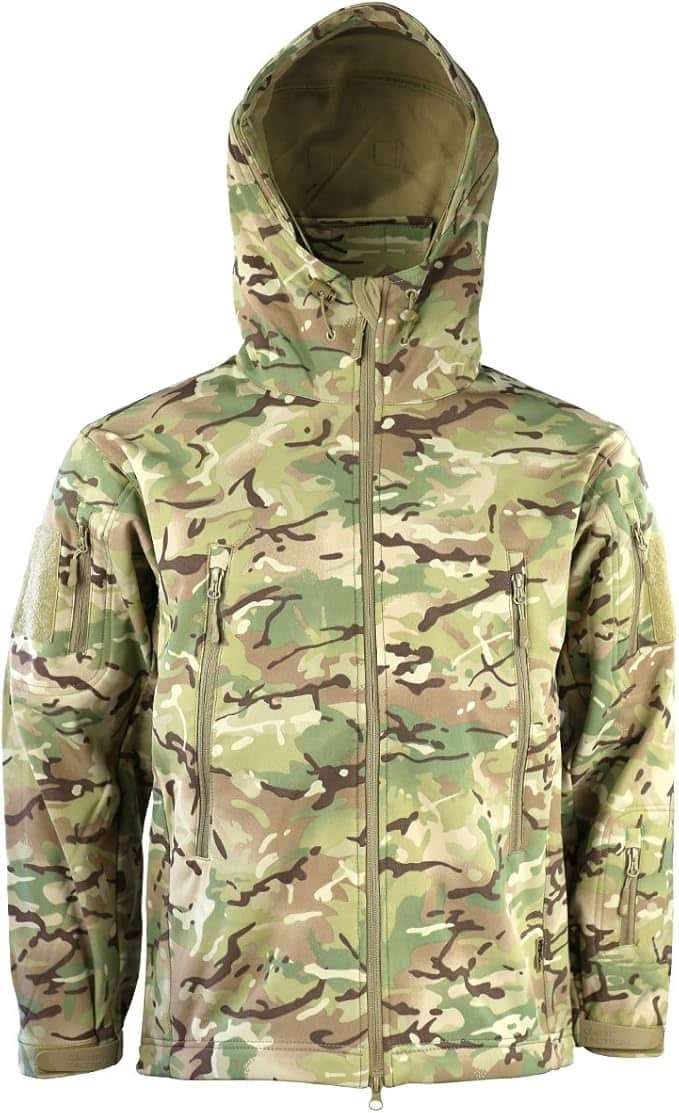
Waterproof and soft-shell jackets are mostly used as military jackets which are designed to have full protection in any extreme weather condition meanwhile breathable and flexible. To keep your jacket waterproof and windproof you need to do the right wash and take care of it.
- Check the Care Label First
Always check on the label for information from the manufacturer in case you need to wash your jacket. Waterproof and softshell fabrics often require special care to keep them working correctly.
- Use a Technical Wash:
There are detergents available in the market designed specifically for waterproof fabrics like Nikwax, or Granger’s. All of these cleansers completely clean the coating without denigrating any type in the process.
- Avoid Fabric Softeners and Bleach
Fabric softeners and bleach can damage the waterproof layer and reduce the jacket’s ability to repel water. Always opt for a detergent that is free from these chemicals.
- Machine Wash on a Gentle Cycle
Choose a gentle or delicate cycle for your washing machine so the fabric won’t be treated roughly. Opting for cold or lukewarm water when washing (never hot) will keep the jacket waterproof and ensure the fabric does not shrink.
- Rinse Thoroughly
After the washing cycle is complete, make sure to rinse out all of the detergents. Detergent left on the fabric can reduce the repellence of the jacket.
Reapplying the DWR Coating
The DWR coating of a waterproof jacket can wear off over time, losing the water-repelling abilities. If you wash your jacket and the water does not bead on the surface anymore, then that is a sign that it is time to reapply your DWR.
- Spray-On or Wash-In DWR Products: There are two types of DWR reproofing treatments available—spray-on and wash-in.They’re both effective, but spray-on products allow for a more focused application. Apply it to clean and dry skin following the instructions on the product.
- Heat Activation: Many DWR treatments need heat for full activation. For future reproofings, once the treatment has been applied and dried then the jacket can be tumble dried on low heat or the coating can be sealed using an iron (not placed directly onto) without steam at a low heat setting.
Wrap Up

More intels about our Military jackets
Get ready for the seasons with our military and camouflage jackets. They were designed in collaboration with professionals from the armed forces.
In this way, you make sure that your military visual jacket stays the same, insulated and warm, and to can protect yourself at any time. For expert recommendations and premium quality tactical gear, you can check Kula Tactical., as one of the most prominent military and tactical apparel resources on the market offers a range of products designed to meet your needs and withstand the demands of your adventures.


